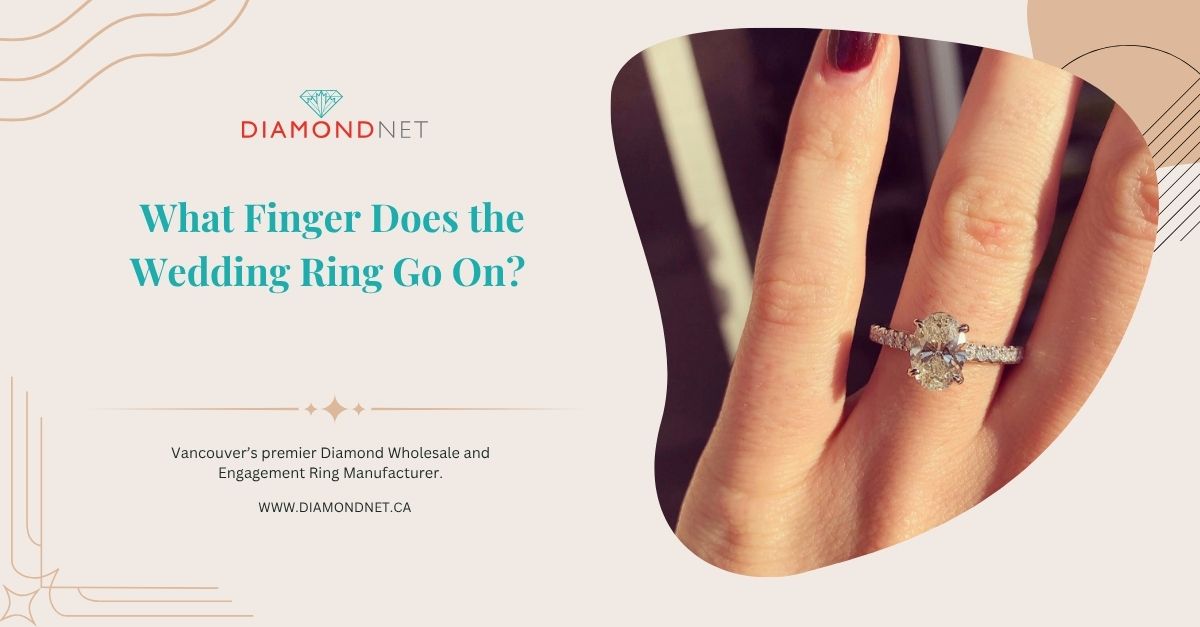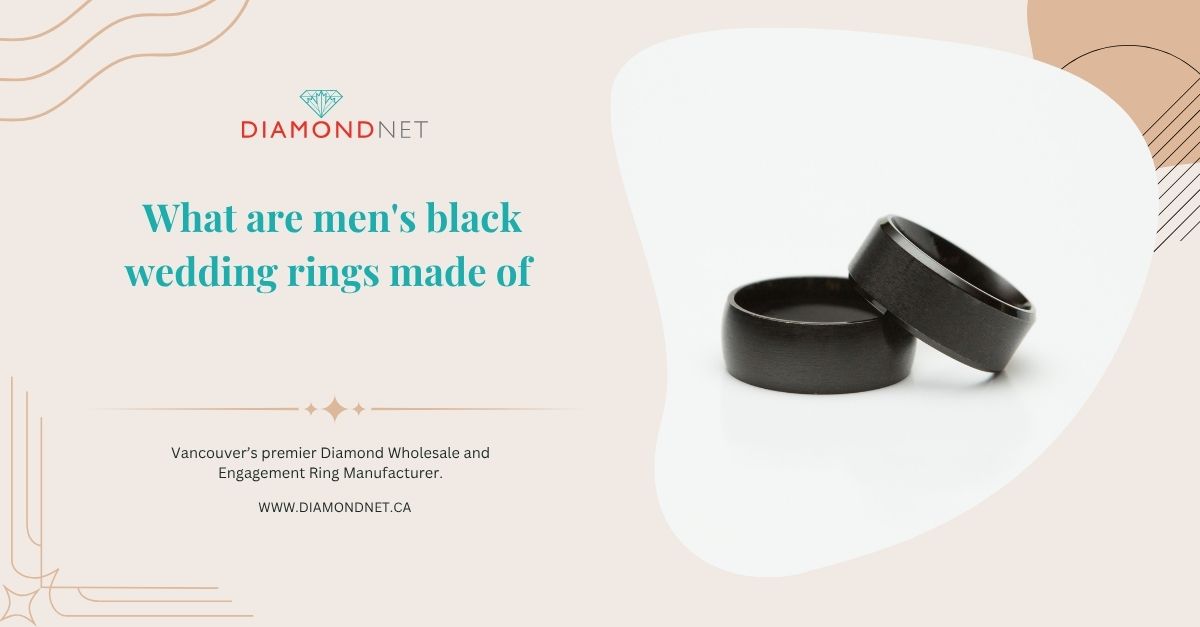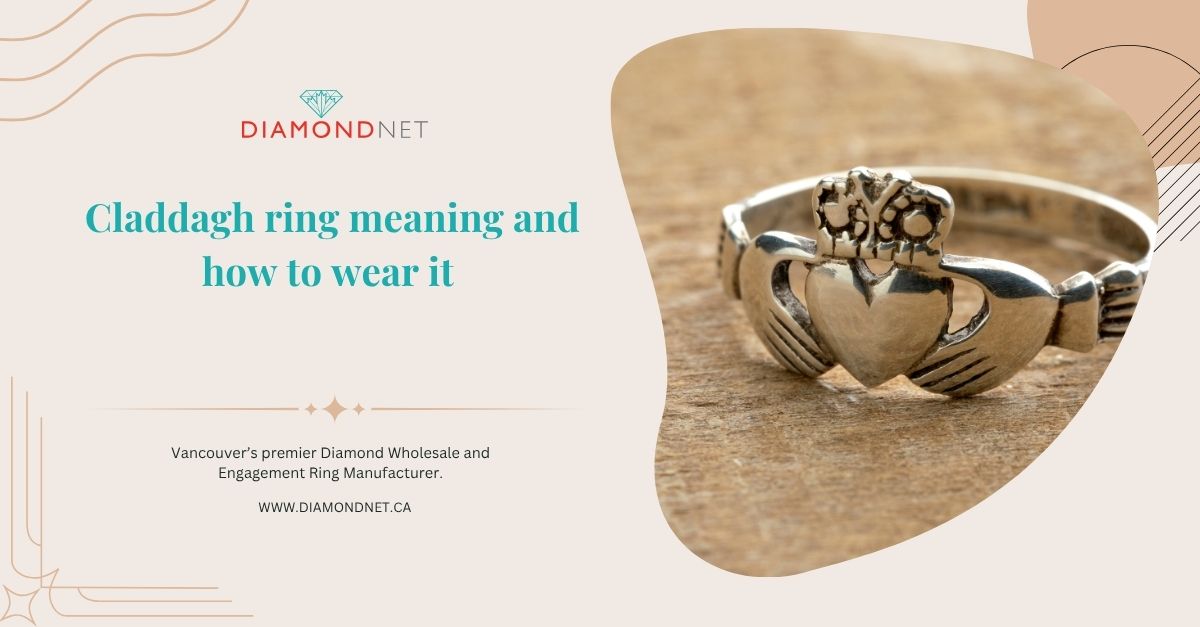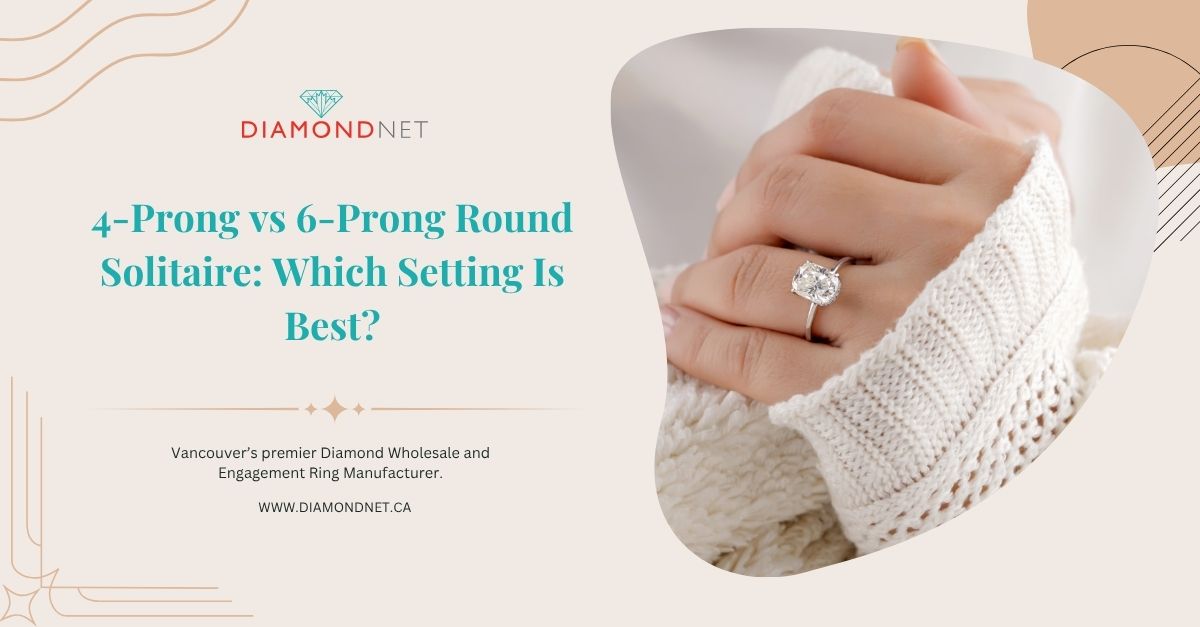In North America, when someone asks, “What finger does the wedding ring go on?” the automatic answer is usually, “Left!”
It’s true. In Canada, the U.S., and much of the Western world, the left ring finger is the default for wedding bands. It’s what tradition tells us. It’s what we see in movies. And most couples don’t think twice.
But here’s the thing — that answer isn’t universal. In fact, across the world and even within certain communities, the choice of finger and hand can carry very different meanings.
So where did this idea come from? And should you follow it? In this guide, we’ll explore the origins of the left-hand tradition, the cultural differences that shape ring placement, and why today’s couples have more freedom than ever.
Here is the Quick Answer:
In Canada and many Western countries, wedding rings are traditionally worn on the fourth finger of the left hand, but that isn’t a universal rule. Cultural and religious customs vary, with some traditions placing the ring on the right hand or switching sides after marriage. Engagement and wedding rings are usually stacked, but modern couples often prioritize comfort, lifestyle, and personal meaning. Your ring can go on whichever finger or hand best reflects your values, relationship, or story.
The Wedding Ring Finger: What You’ve Been Told
In much of North America, the left-hand ring finger — specifically the fourth finger — is considered the standard placement for a wedding ring. It’s what most people expect, and few question why.
Why the Fourth Finger?
The tradition traces back to ancient Rome, where it was believed that a special vein, the vena amoris (Latin for “vein of love”), ran directly from the fourth finger of the left hand to the heart. Because marriage symbolizes love and union, placing a ring on this finger was thought to physically connect the commitment to the heart.
Romantic? Absolutely. Anatomically accurate? Not really.
Modern science has shown that all fingers have similar vein structures. There’s no exclusive pathway to the heart from the ring finger. Still, the symbolism endured — and many couples continue to honour the tradition as a sweet historical gesture.
But here’s the truth: it’s just that — a symbol. Not a rule. The left-hand ring finger custom is widely followed, but it’s not universal, nor is it mandatory. Like many traditions, it offers meaning but not obligation.
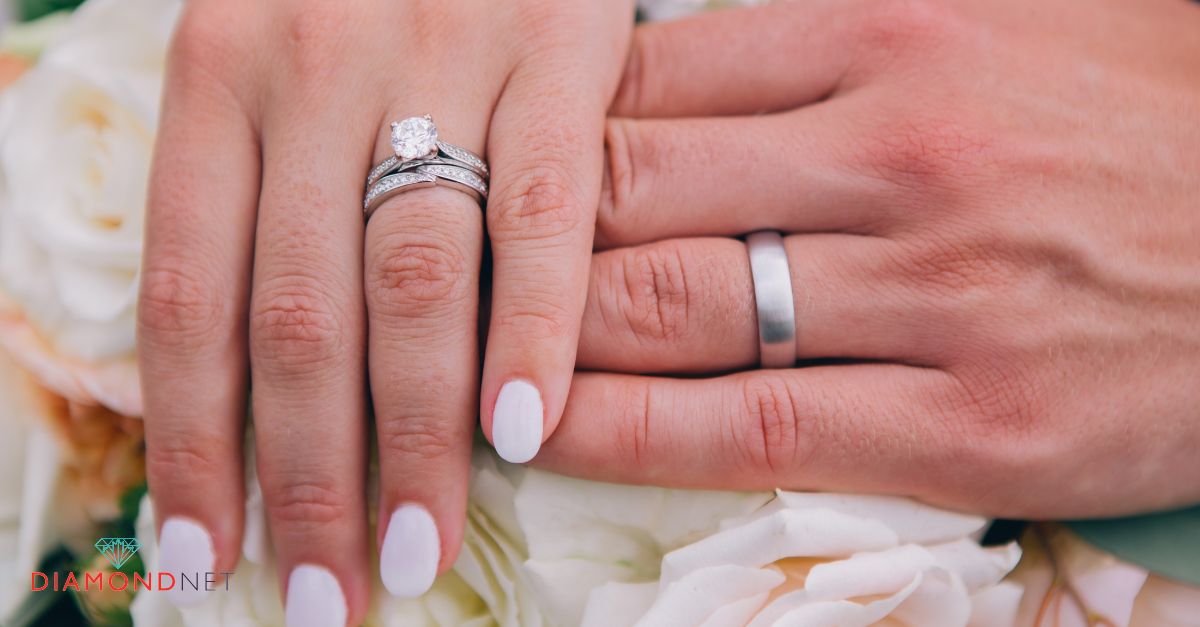
What hand is the wedding ring worn on?
Wearing a wedding ring on the left hand may be the norm in Canada and the U.S., but it’s far from a global standard. Around the world, many cultures place the wedding ring on the right hand — not as a rejection of tradition, but as their tradition.
In countries like Norway, Austria, Poland, Russia, Germany, and parts of India, the right hand is considered more active or honourable — the hand used to make oaths and promises. That symbolism makes it the natural choice for marriage.
Religious practices also shape customs. In Greek Orthodox ceremonies, the ring is traditionally worn on the right hand as part of the faith’s formal wedding rituals.
And in places like Brazil, Turkey, Lebanon, and Syria, couples often wear the engagement ring on the right hand and move it to the left after the wedding. Germany does the opposite — engagement rings start on the left and switch to the right for the wedding band.
Even within countries, traditions can vary by region, religion, or family preference. What matters most isn’t following a universal rule, but embracing what feels meaningful to you.
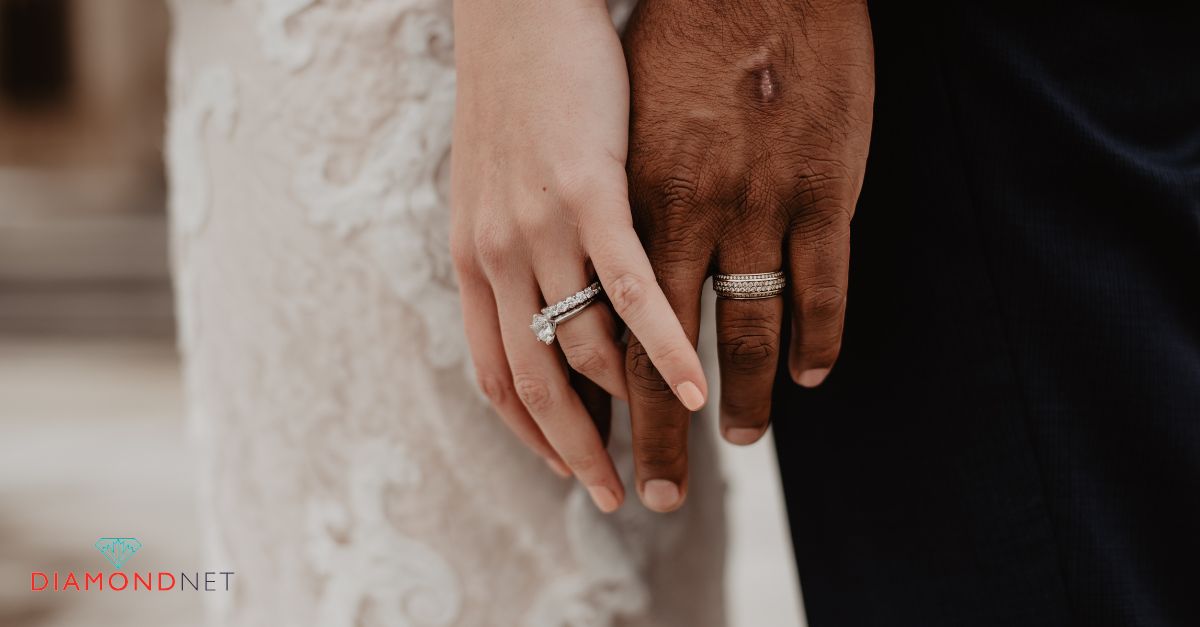
Right-Hand Wedding Rings: Not Just a Statement, Sometimes a Standard
The right hand isn’t just a trendy twist — for many, it’s the traditional place to wear a wedding ring. In cultures across Eastern Europe, South America, and parts of Asia, the right hand has long carried the weight of commitment.
But beyond tradition, the right hand has taken on modern meaning. In China, historical customs once tied ring placement to gender roles: brides wore rings on the right — the so-called “working hand” — reflecting their central role in the household, while grooms wore theirs on the left.
Today, right-hand rings have expanded into something more personal. For many, a right-hand ring isn’t tied to marriage at all. It might mark a career milestone, a birthday, or a moment of self-reclamation. These rings — often set with bold diamonds or coloured gemstones — are expressions of identity, independence, and celebration.
Some people simply find that the right hand feels better, works better, or makes a stronger personal statement. Whether chosen for symbolism, comfort, or style, wearing your ring on the right is no longer a departure from tradition — it’s a tradition of its own.
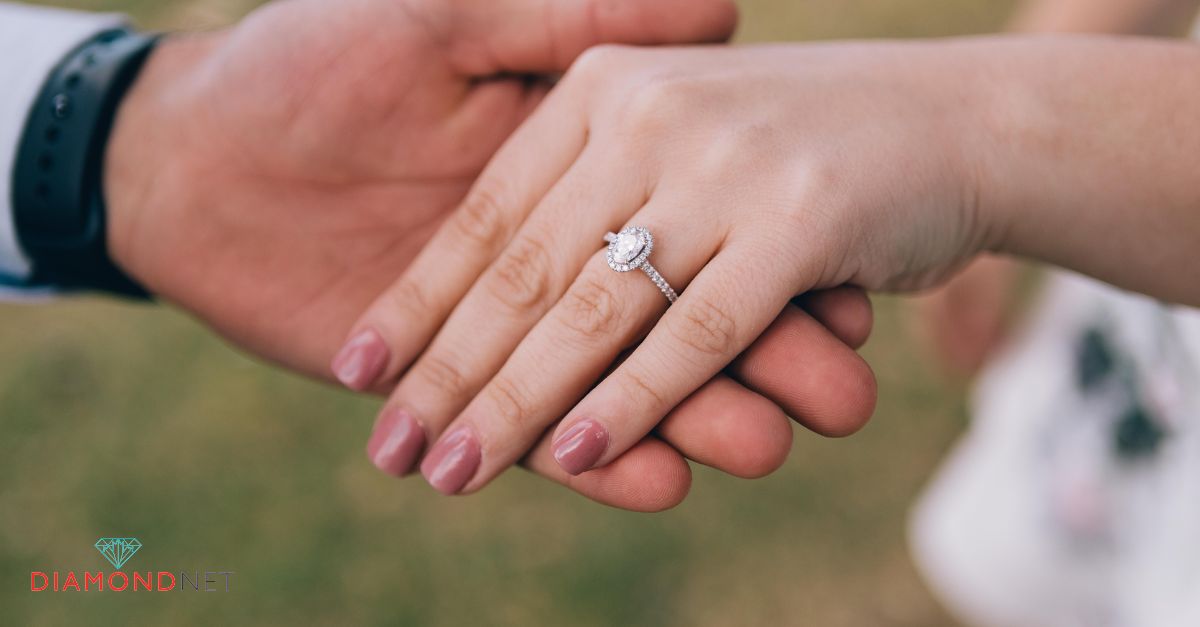
Engagement Ring vs. Wedding Ring: What Goes Where and When?
Traditionally, the engagement ring is worn on the fourth finger of the left hand — the same finger destined for the wedding band. On the wedding day, the band is added to the same finger, often placed below the engagement ring so it sits closer to the heart.
This stacking order reflects the idea that the wedding ring is the ultimate symbol of commitment — final, foundational, and closest to the heart both physically and symbolically.
But tradition isn’t the only option.
Many couples now approach ring placement with creativity. Some switch the engagement ring to the right hand after the ceremony. Others choose to wear just one ring day-to-day for comfort or simplicity. In some cases, design preferences — like wide bands or unique shapes — make stacking impractical.
The key is to choose what feels right for you. Rings don’t have to follow a rulebook. What matters is how they function in your daily life — and how they express your story.
After the Wedding: To Stack, Switch, or Separate?
Once the vows are exchanged, there’s no one way to wear your rings. Some couples stack both on the same finger. Others move the engagement ring to the right hand for balance. Some remove it entirely and only wear the wedding band.
Personal comfort often guides the decision. With modern ring designs — including wide bands, curved settings, and mixed metals — stacking isn’t always practical. Aesthetics and practicality often take priority over symbolism.
What matters most is how the rings fit your lifestyle, your hand, and your sense of self. There’s no wrong way — just your way.
Designing Rings That Work Together (Or Apart)
If you’re designing from scratch, it helps to think beyond the proposal. Will your engagement ring and wedding band complement each other in shape, setting, and scale? Will they feel balanced when stacked — or will they need to stand alone?
Some designs are made to match. Others are intentionally distinct, reflecting different moments or values. Wide bands or unusual profiles can make stacking tricky, so thinking ahead about wearability matters more than many couples realize.
Even if you plan to wear just one at a time, consider how each ring functions on its own. The right combination should look and feel effortless — whether paired, rotated, or worn solo.
Style, Comfort, and Real Life: The Practical Side
Tradition is symbolic, but your ring has to live in the real world — and real life isn’t always ring-friendly.
If you’re left-handed, that solitaire might take more daily wear and tear. If your fingers swell in the summer, sizing becomes more than a detail — it affects comfort and wearability. If you type for hours or work with your hands, you’ll feel every edge, twist, or spin.
These aren’t flaws in your finger — they’re part of your reality. And they should shape your ring choices just as much as tradition or design.
A wedding ring should move with you, not fight you. It’s not just about beauty — it’s about fit, comfort, and how it works with your day-to-day life.
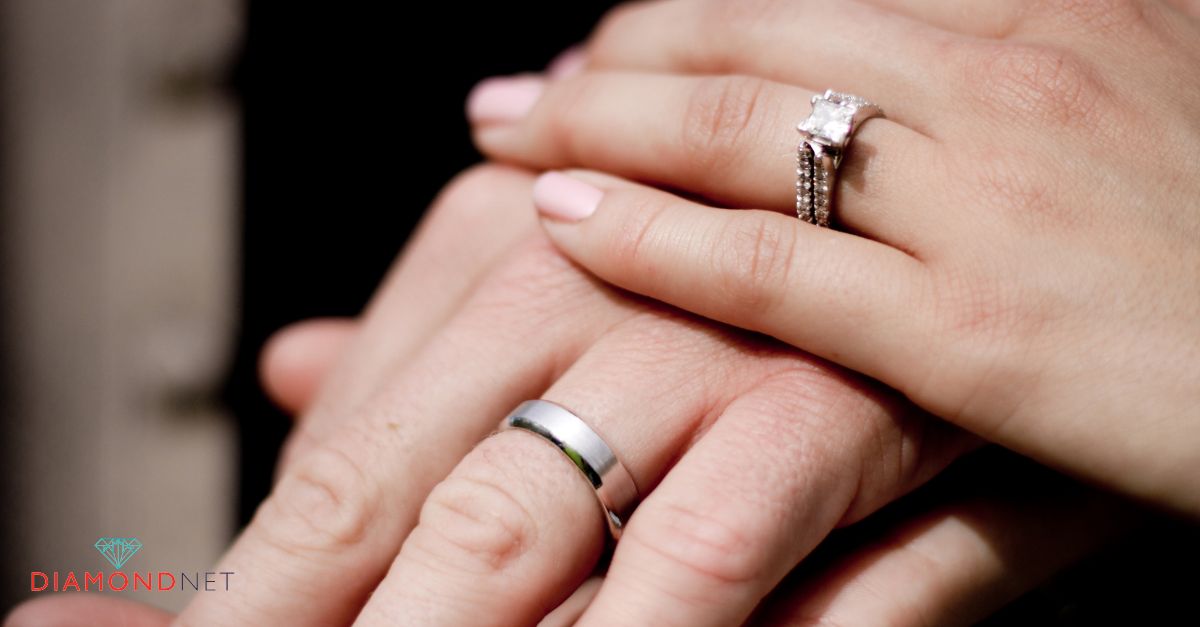
When Tradition Meets Anatomy: Making the Right Fit
A wedding ring may carry symbolic weight, but it’s also a physical object — one that needs to feel right. It should sit comfortably, stay secure, and work with the natural shape of your hand.
Some fingers taper; others don’t. Some knuckles are more prominent, making the ring feel loose once it slides past. What fits your best friend perfectly might be unworkable for you — and not all rings are easy to resize, especially eternity bands or intricate custom settings.
Fit isn’t just a matter of size — it’s about balance, movement, and how the ring interacts with your body. The right design takes all of that into account, so it feels as good as it looks.
A New Way to Think About Ring Placement
There’s no single answer to “What finger does the wedding ring go on?” because there’s no single kind of marriage — and no single kind of you.
Ring placement has always carried meaning, but today, that meaning is increasingly personal. Some follow tradition because it connects them to family, heritage, or history. Others break from it entirely to reflect identity, independence, or love on their own terms.
Where you wear your ring isn’t just a nod to convention. It can be a declaration of who you are, what matters to you, and how you move through the world.
Meaning Over Convention: Claiming Your Symbolism
Left hand. Right hand. Middle finger. Pinky. A necklace chain. Your wedding ring can go wherever it feels most true to you.
For some, the left ring finger honours tradition or family legacy. For others, the right hand feels more powerful, more personal, or simply more comfortable. And for many, especially after major life shifts — like divorce, coming out, or starting anew — a ring becomes a symbol of resilience and self-definition.
The strongest symbolism isn’t inherited. It’s chosen. And what matters most isn’t where your ring goes — but what it means when you wear it.
Don’t Just Wear Tradition; Design It
You don’t have to fit into centuries of other people’s customs. You can build something that fits you — literally and symbolically.
Designing your ring from the ground up lets you shape its meaning from the start. From the cut of the diamond to the curve of the band, every detail is an opportunity to reflect your values, your comfort, and your story.
It’s not just about how the ring looks — it’s about how it feels. On your hand. In your life. And in what it says about where you’re going.
Because in the end, you’re not just choosing a finger. You’re choosing a symbol. One that reflects who you are and what this moment means.
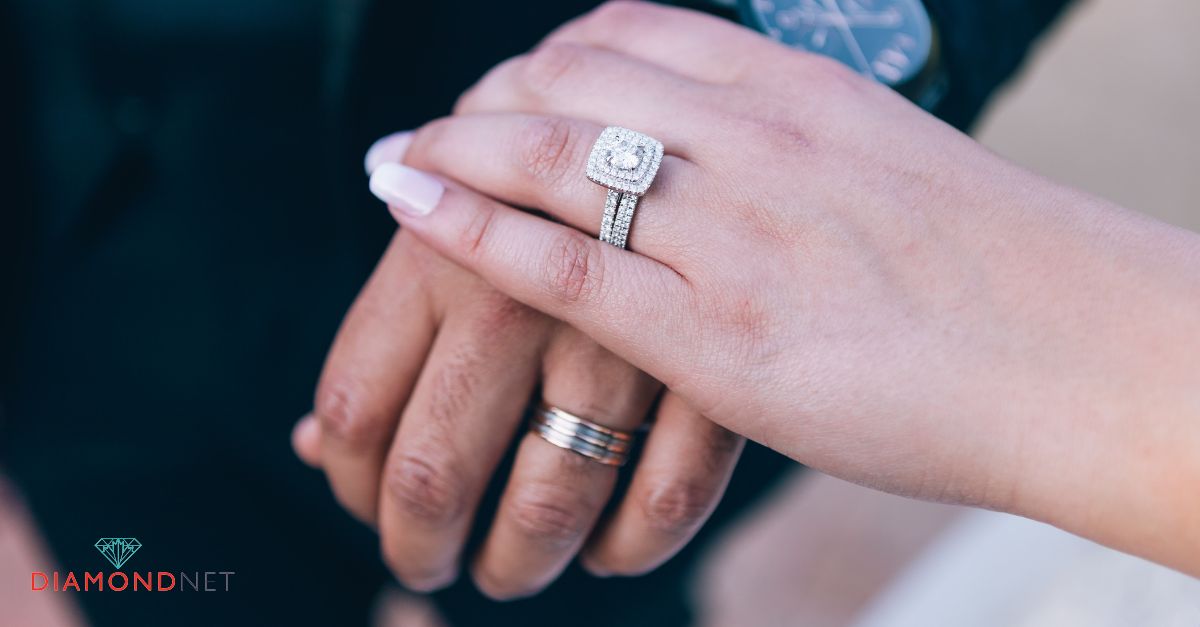
Conclusion: Your Ring, Your Rules
Where you wear your wedding ring says something — but it doesn’t say everything. Left hand, right hand, stacked or solo, none of it matters if it doesn’t feel like you.
Tradition can be beautiful. So can breaking it. What counts is that your ring tells the truth — about your commitment, your values, and your story.
At DiamondNet, we believe in designing rings that carry meaning, not just sparkle. That means guiding you through every detail — from choosing the setting to understanding diamond certification — so you walk away with something that fits more than your finger.
We’re here when you’re ready to design your own rules.
